
Cooking Rabbits the French Way (Recipes)
Rabbit, or lapin in French, holds a special place in French cuisine, reflecting the country’s rural traditions and love for game meat. Once a common animal on French farms, rabbits have long been a staple in both rustic and refined dishes. French chefs and home cooks alike appreciate the lean, tender meat of rabbits, which is low in fat but rich in flavor, making it a versatile ingredient in a variety of preparations. Rabbit dishes can be found across the regions of France, from the countryside to Michelin-starred restaurants, showcasing a range of cooking techniques and accompaniments.
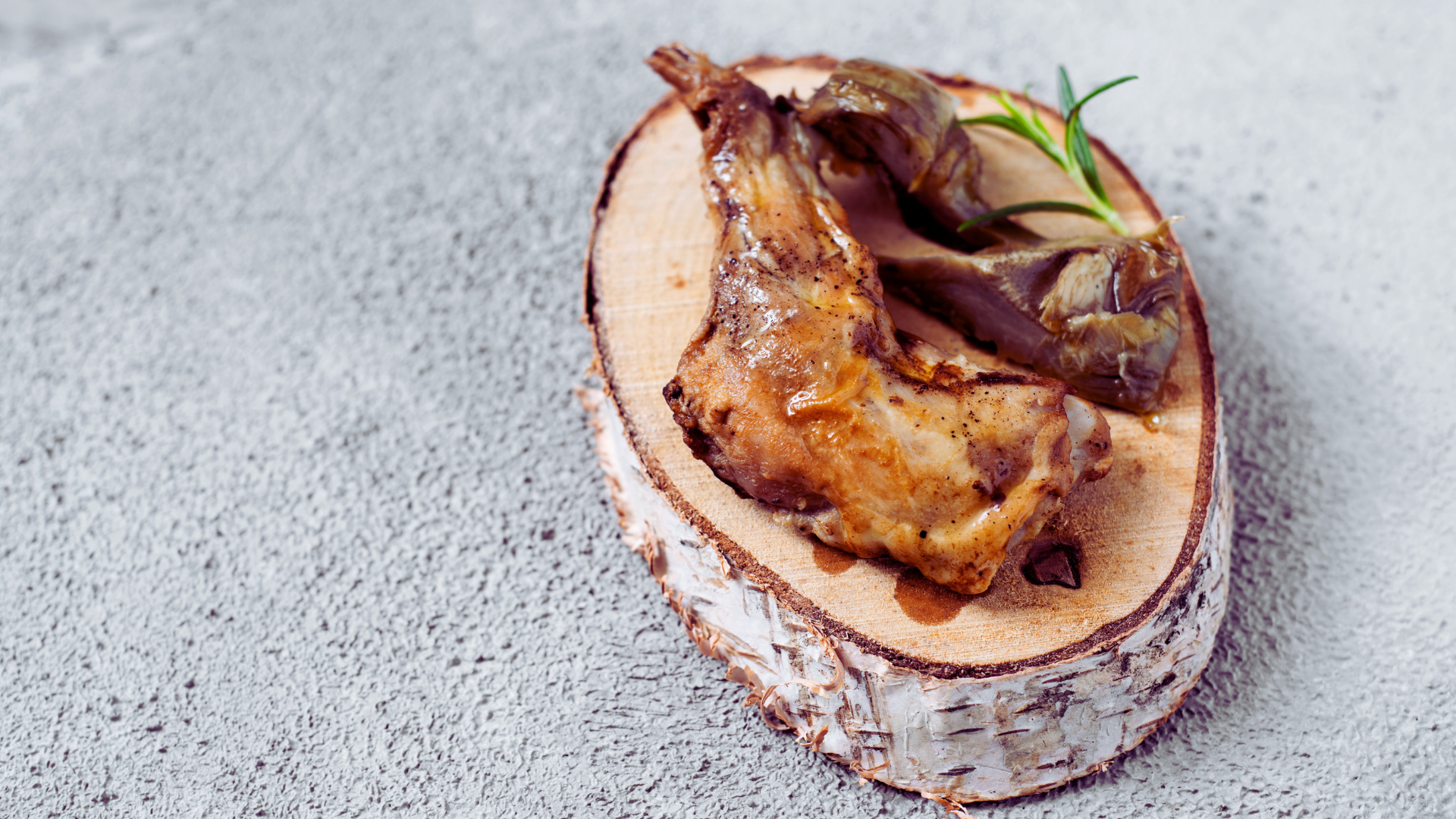
Characteristics of Rabbit Meat
Rabbit meat is highly prized for its mild yet slightly gamey flavor and tender, lean texture. It's often compared to chicken, though with a more delicate flavor, which makes it ideal for absorbing the flavors of herbs, spices, and sauces. Rabbits are typically divided into two categories:
Farm-raised rabbits: More commonly used in French cooking today, these rabbits tend to have a milder, less gamey flavor and a softer texture.
Wild rabbits (lapin de garenne): Wild rabbits, which are hunted in rural areas, have a stronger, more pronounced flavor due to their diet and lifestyle.
Techniques for Cooking Rabbit in French Cuisine
Braising and Stewing: Rabbit, being a lean meat, benefits from slow-cooking methods such as braising or stewing, which help keep the meat moist and tender while developing deep flavors. These methods are typical in dishes like Civet de Lapin or Lapin Chasseur.
Marinating: Wild rabbits often have a stronger, more gamey flavor, so marinating the meat in wine, vinegar, or aromatics is a common technique in French cuisine. This helps tenderize the meat and infuse it with flavor.
Roasting: While less common, rabbit can also be roasted, particularly when using farm-raised rabbits. The meat is typically brushed with oil or butter and herbs to keep it moist during roasting.
Sautéing: For quicker preparations, rabbit can be sautéed in a pan with butter or oil. The meat is often finished with a sauce, such as the mustard-based sauce in Lapin à la Moutarde.

Lapin à la Moutarde (Rabbit with Mustard)
One of the most iconic French rabbit dishes, Lapin à la Moutarde features rabbit pieces cooked in a creamy mustard sauce. Dijon mustard, a staple of French cuisine, is used to coat the rabbit, which is then seared and braised with white wine, onions, and herbs like thyme and bay leaves. The sauce is usually enriched with cream, creating a tangy, luxurious dish often served with potatoes or fresh bread to soak up the sauce.

Lapin Chasseur (Hunter’s Rabbit)
This classic dish, also called Lapin à la Chasseur, is prepared using a technique known as chasseur, meaning "hunter’s style." The rabbit is browned and then simmered in a sauce made from tomatoes, white wine, mushrooms, onions, and garlic. The sauce is flavored with herbs like thyme, bay leaves, and sometimes tarragon, making it a hearty and rustic dish. Traditionally served in autumn, Lapin Chasseur reflects the hunting culture of rural France, where game animals like rabbit are prized.

Civet de Lapin (Rabbit Stew)
Civet is a type of traditional French stew, often made with game. Civet de Lapin involves marinating rabbit in red wine and aromatics, then slow-cooking it with vegetables such as onions, carrots, and mushrooms. The dish is further enriched with bacon or lardons, which add a smoky depth to the flavor. This dish is typically served in the colder months, and the sauce, thickened with blood or liver, has a rich, gamey character.

Lapin à la Provençale (Provençal-Style Rabbit)
A lighter preparation of rabbit, Lapin à la Provençale comes from the Provence region, known for its Mediterranean influences. The rabbit is cooked with tomatoes, olives, garlic, and herbs like rosemary and thyme. Sometimes white wine or olive oil is added, giving the dish a bright, aromatic flavor. This dish reflects the sun-drenched cuisine of Provence and is often served with rice or crusty bread.

Terrine de Lapin (Rabbit Terrine)
A traditional French dish, Terrine de Lapin is a type of pâté made from rabbit meat, often combined with pork for added richness. The meat is seasoned with herbs like thyme and bay leaves, sometimes mixed with vegetables like carrots or mushrooms, and pressed into a terrine mold. It’s then slow-cooked until firm and served cold, sliced and eaten with bread or pickles. This dish is popular as an appetizer or part of a charcuterie board, often enjoyed with wine.

Lapin Rôti (Roasted Rabbit)
Roasting is a simple yet elegant way to prepare rabbit. Lapin Rôti typically involves roasting the whole rabbit or its parts, seasoned with garlic, rosemary, thyme, and olive oil or butter. The rabbit is often basted during roasting to keep the meat tender and moist. The result is a delicate dish with crispy skin and juicy meat, often served with roasted potatoes or seasonal vegetables.
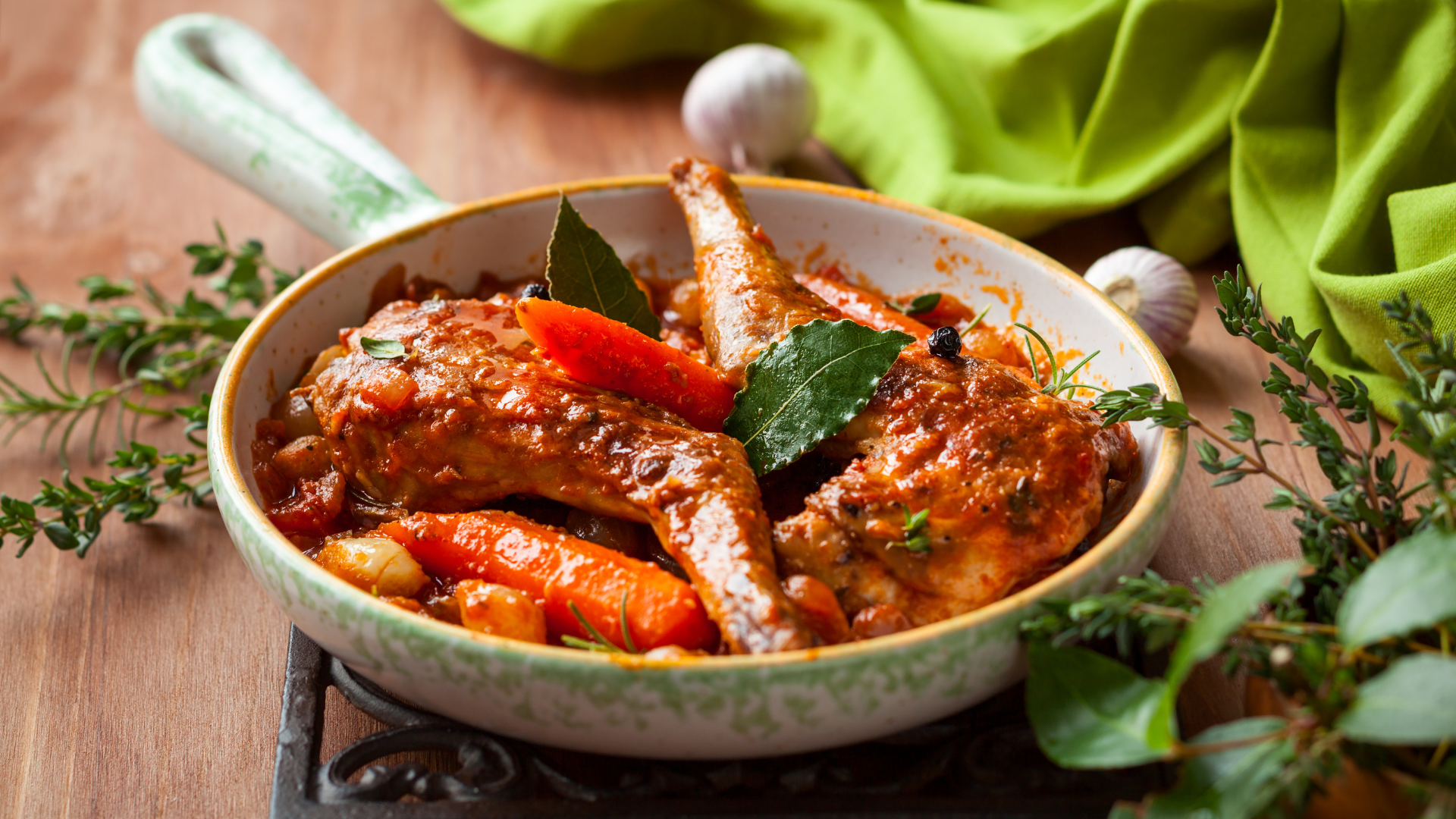
Lapin en Gibelotte (Rabbit Stew with Wine)
Gibelotte is a type of French stew traditionally made with rabbit, although other meats are sometimes used. The rabbit is cooked slowly in white wine, with onions, garlic, and herbs like parsley and thyme. It may also include mushrooms and carrots. The wine sauce is light and flavorful, giving the rabbit a delicate flavor, and it’s typically served with bread or potatoes to absorb the broth.
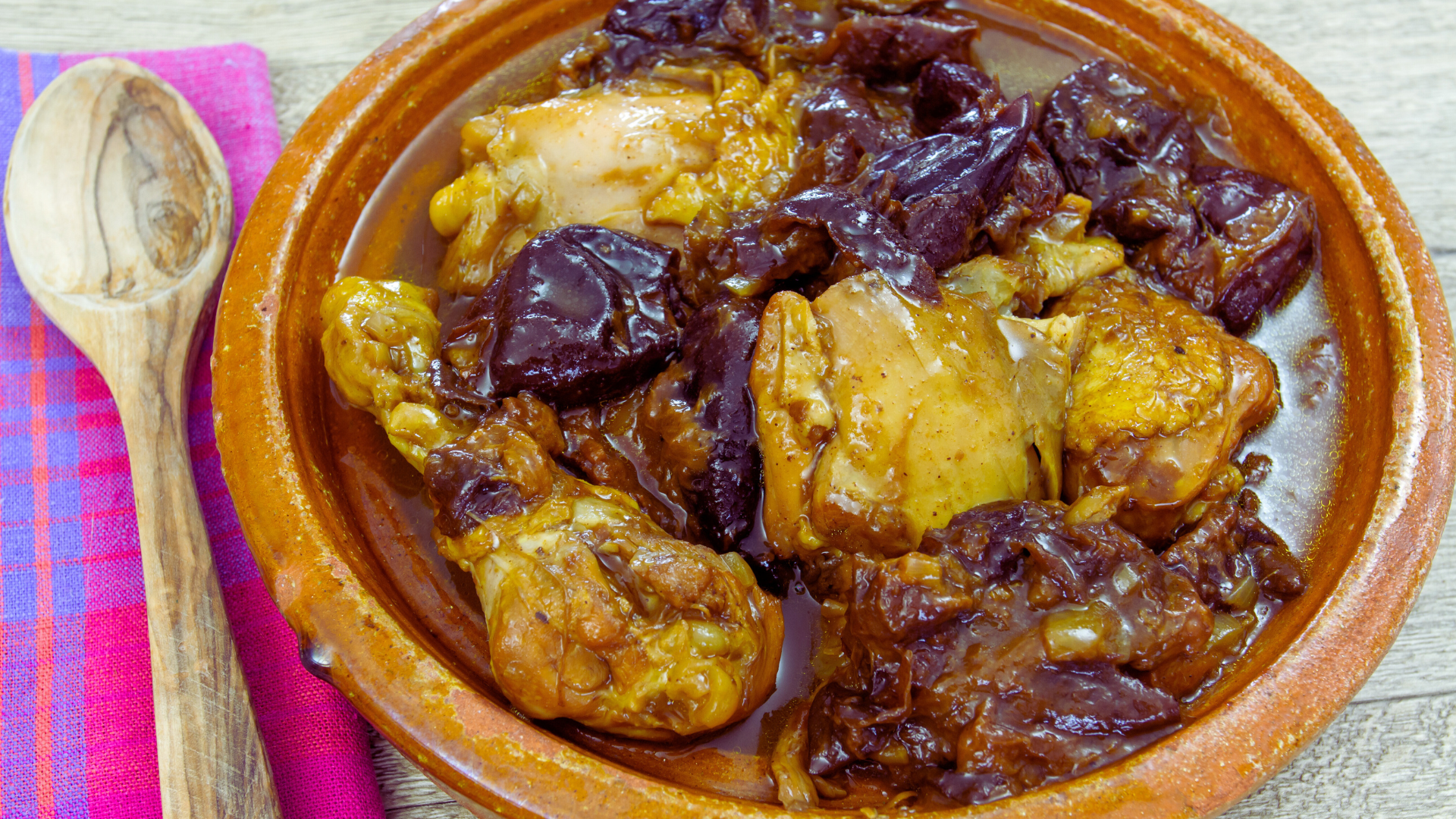
Lapin aux Pruneaux (Rabbit with Prunes)
A distinctive French dish, Lapin aux Pruneaux combines the savory flavor of rabbit with the sweetness of prunes. The rabbit is braised with prunes, onions, and red or white wine, creating a sweet-and-savory contrast. The prunes soften and dissolve into the sauce, giving it a slightly fruity richness. This dish is often found in Normandy, a region known for its love of apples, cider, and fruit-based dishes.

Lapin à la Flamande (Flemish-Style Rabbit)
From the northern region of France, near the Belgian border, Lapin à la Flamande is a regional specialty that features rabbit cooked with beer instead of wine, a nod to the region's beer culture. The rabbit is slowly simmered with onions, garlic, carrots, and sometimes juniper berries, giving the dish a hearty, rustic flavor. The use of beer adds a slight bitterness and depth to the sauce.
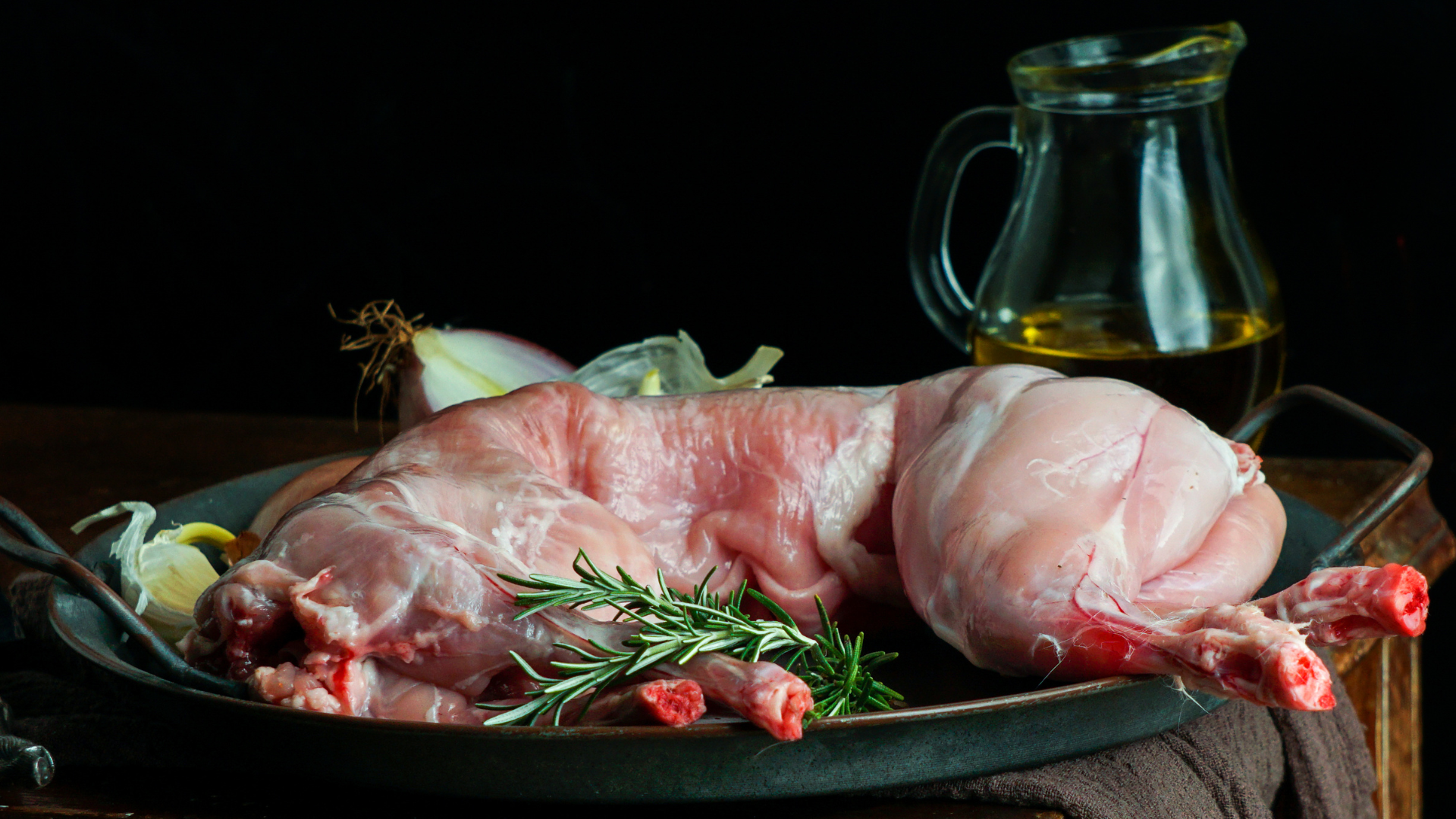
Larded Rabbit
Classical
Lard a large rabbit and place it in a stew-pan with a few slices of cold ham, a bundle of fresh herbs, a tablespoon of olive oil, and a small amount (about 1/2 cup) of white wine. Simmer gently until fully cooked. Once done, strain the gravy and pour it over the rabbit before serving.
A traditional French recipe for Larded Rabbit (Lapin Lardé), often prepared with lardons (cured pork strips), vegetables, and white wine. This dish is deeply flavorful, with the rabbit taking on the richness of the lardons and the freshness of aromatic herbs.
Origins of Larding
Larding is a classical French cooking technique that dates back to the Middle Ages and was primarily used for lean meats like game, poultry, and rabbit.
In the absence of refrigeration, preserving and enhancing flavor was important. Wrapping lean meats like rabbit with pork fat or inserting small strips of fat into the meat helped retain moisture, add flavor, and improve the overall texture.
Larding was not limited to French cuisine and was also found in various forms in other European countries where game was a part of the diet.
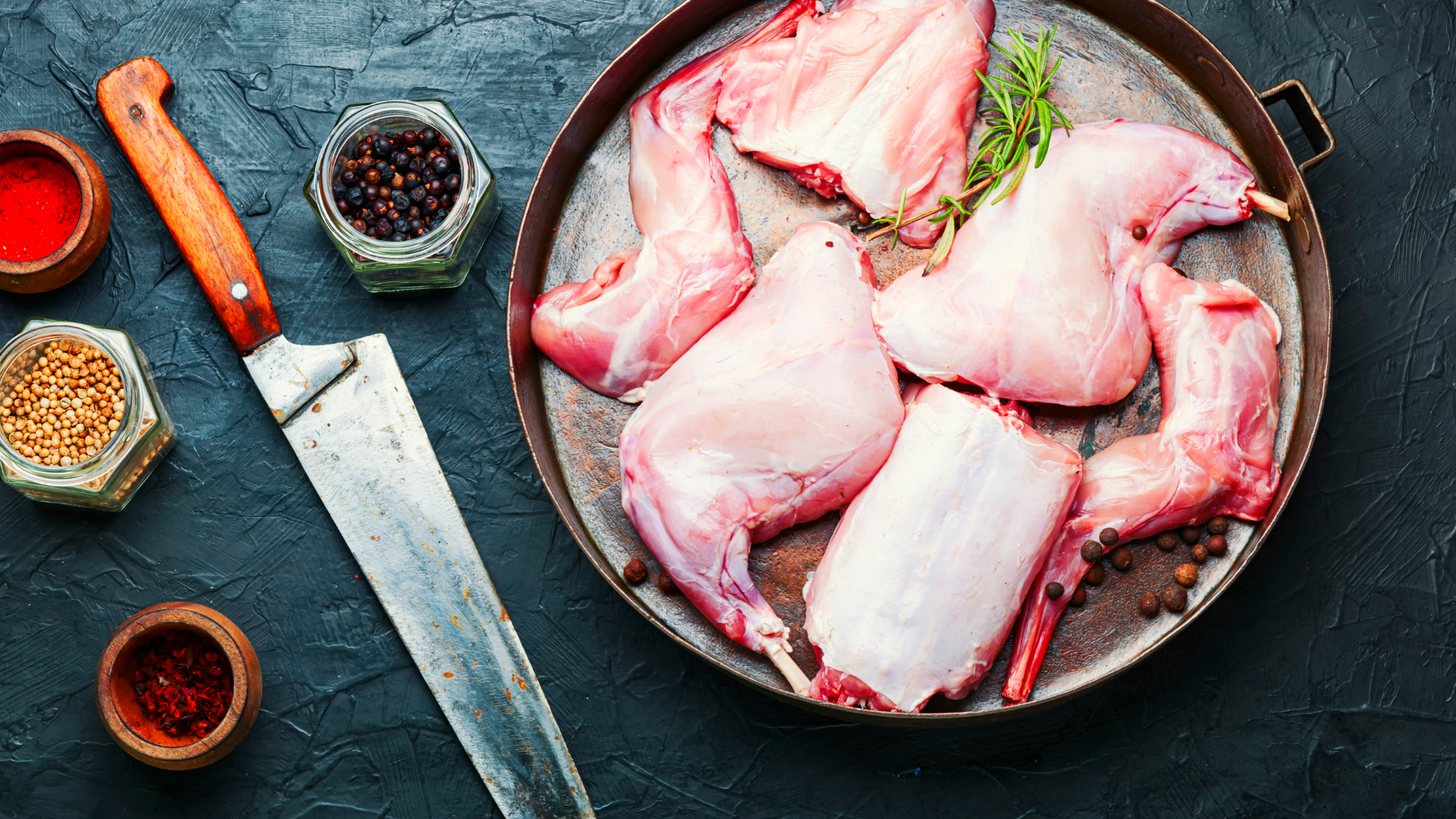
French Influence
In France, larding was especially popular in haute cuisine during the Renaissance and the period of classical French cookery (17th-19th centuries).
French chefs perfected the art of using thin strips of pork fat or bacon, often threading them through the lean meat using a special tool called a "larding needle."
Rabbit cooked in this way was often served at elaborate banquets, as game meats like rabbit were seen as delicacies.

-
Ingredients:
1 rabbit, cut into pieces
100g lardons (or thick bacon, diced)
2 tablespoons olive oil
2 medium onions, sliced
3-4 cloves garlic, minced
3-4 carrots, sliced
2 celery stalks, chopped
1 bouquet garni (a bundle of thyme, bay leaf, and parsley)
300ml dry white wine
200ml chicken stock
100g mushrooms (optional)
Salt and pepper to taste
2 tablespoons butter
Fresh parsley, chopped (for garnish)
Instructions:
Prepare the Rabbit:
Pat the rabbit pieces dry with paper towels and season with salt and pepper.
If the rabbit isn't already larded, you can make small cuts in the meat and insert pieces of lardons or bacon into them. This will give the meat extra flavor and moisture.
Sear the Rabbit:
In a large, heavy-bottomed pan or Dutch oven, heat olive oil over medium heat.
Add the rabbit pieces in batches and sear until browned on all sides (about 5-6 minutes per batch). Remove and set aside.
Cook the Lardons:
In the same pan, add the lardons and cook until crispy, about 5 minutes. Remove them and set aside with the rabbit pieces.
Sauté the Vegetables:
In the rendered fat, add the onions, garlic, carrots, and celery. Sauté for about 5-6 minutes, stirring occasionally until the vegetables are softened.
Deglaze and Simmer:
Pour the white wine into the pan, scraping up any browned bits from the bottom to deglaze the pan.
Add the chicken stock, bouquet garni, and the seared rabbit and lardons back to the pot.
Cover and reduce the heat to low. Let it simmer gently for about 45-60 minutes, or until the rabbit is tender and the meat easily comes off the bone.
Optional – Add Mushrooms:
If using mushrooms, sauté them separately in butter until golden and add them to the pot during the last 15 minutes of cooking.
Final Touches:
Once the rabbit is cooked, remove the bouquet garni. Taste the sauce and adjust seasoning if necessary with salt and pepper.
You can thicken the sauce slightly by letting it reduce on medium-high heat uncovered for a few minutes.
Serve:
Plate the rabbit with the vegetables and sauce. Garnish with freshly chopped parsley.
Suggested Sides:
This larded rabbit dish pairs beautifully with mashed potatoes, creamy polenta, or fresh French bread to soak up the flavorful sauce. A side of roasted vegetables or a simple green salad works well too.
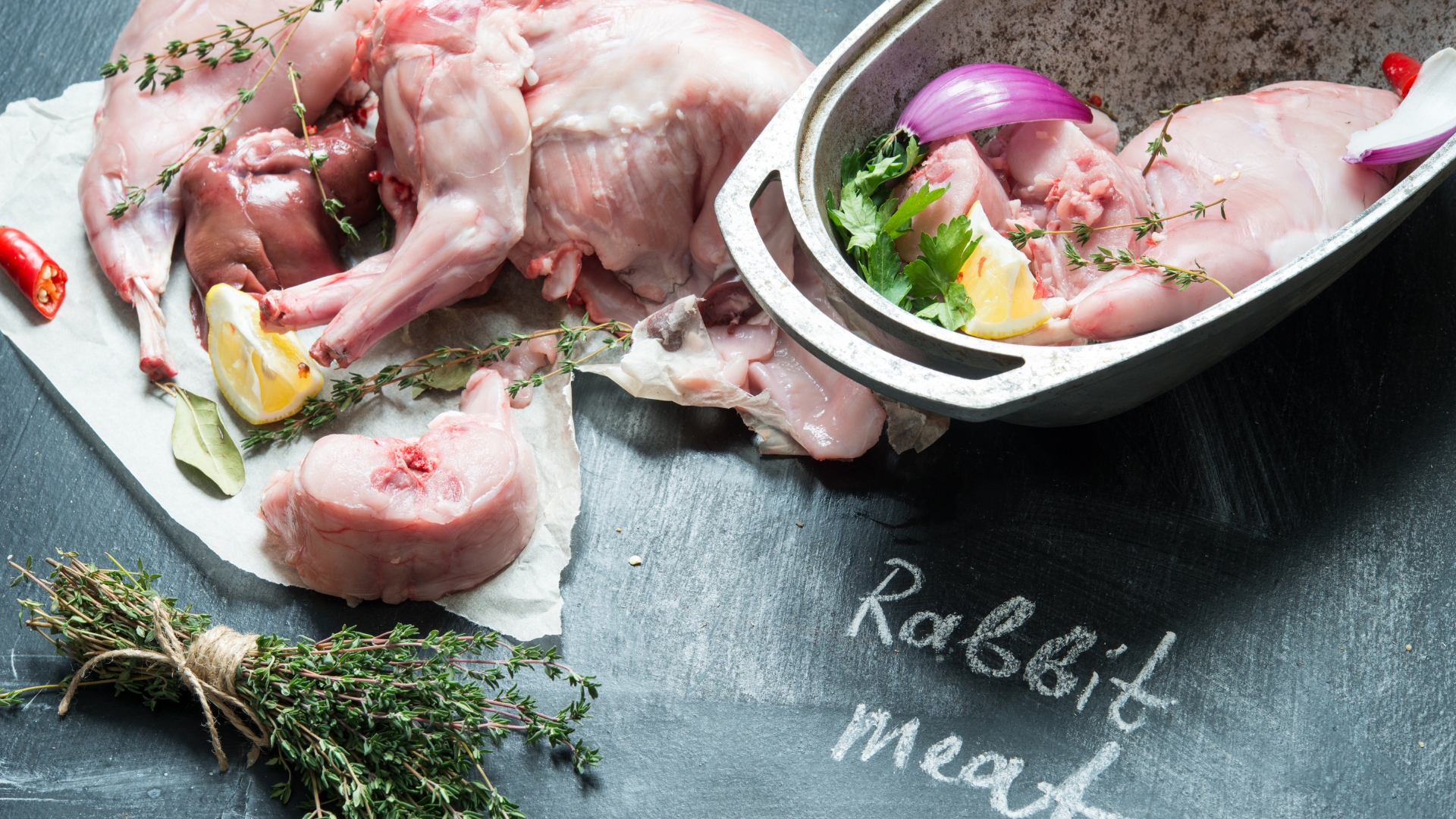
Rabbits in Papers
Classical
Take two young rabbits and remove the limbs, setting them aside. Cut the meat from the body and finely chop it. Combine it with chopped shallots, parsley, mushrooms, and, if desired, a clove of garlic. Season with salt, pepper, and a pinch of nutmeg, then moisten the mixture with olive oil.
Place the rabbit legs in this mixture and let them marinate for three to four hours. After marinating, remove each leg, ensuring it’s coated with the seasoning. Place a thin slice of bacon or cold ham over each leg, then wrap it in a buttered sheet of parchment paper. Slowly broil the legs on a grill and serve them hot, still wrapped in the paper.
This method works equally well for fowl or duck.
Rabbit in French Rural Tradition
Rabbit has been a cornerstone of French rural cuisine for centuries. In many regions, families would keep rabbits as a reliable source of meat, especially during times when larger livestock were too costly to raise. Rabbit dishes were a part of daily life in the countryside, cooked with simple, local ingredients like wine, vegetables, and herbs. The use of rabbit in French cuisine is a reflection of the country's deep connection to its agricultural roots, where self-sufficiency and respect for nature's resources were key to survival.
Modern French Cuisine and Rabbit
Although rabbit is less commonly eaten today than in the past, it remains a cherished ingredient in French regional and traditional cooking. In modern French cuisine, rabbit dishes are often featured in bistros and fine-dining establishments, where chefs celebrate its lean, flavorful meat. There has been a renewed interest in heritage cooking and using local, sustainable ingredients, leading to a resurgence of rabbit on menus across the country.
In addition, the rise of farm-to-table movements has helped maintain rabbit's place in French gastronomy, as many chefs and consumers are interested in supporting local farmers and reducing the environmental impact of their food choices. Rabbit’s low environmental footprint compared to beef and pork makes it an attractive option for those seeking sustainable meat alternatives.

Rabbit is seen as a delicacy in many parts of France today, though it remains a part of everyday cooking in some rural areas. French cuisine’s respect for tradition and local ingredients ensures that rabbit dishes, whether rustic or refined, continue to be celebrated.




